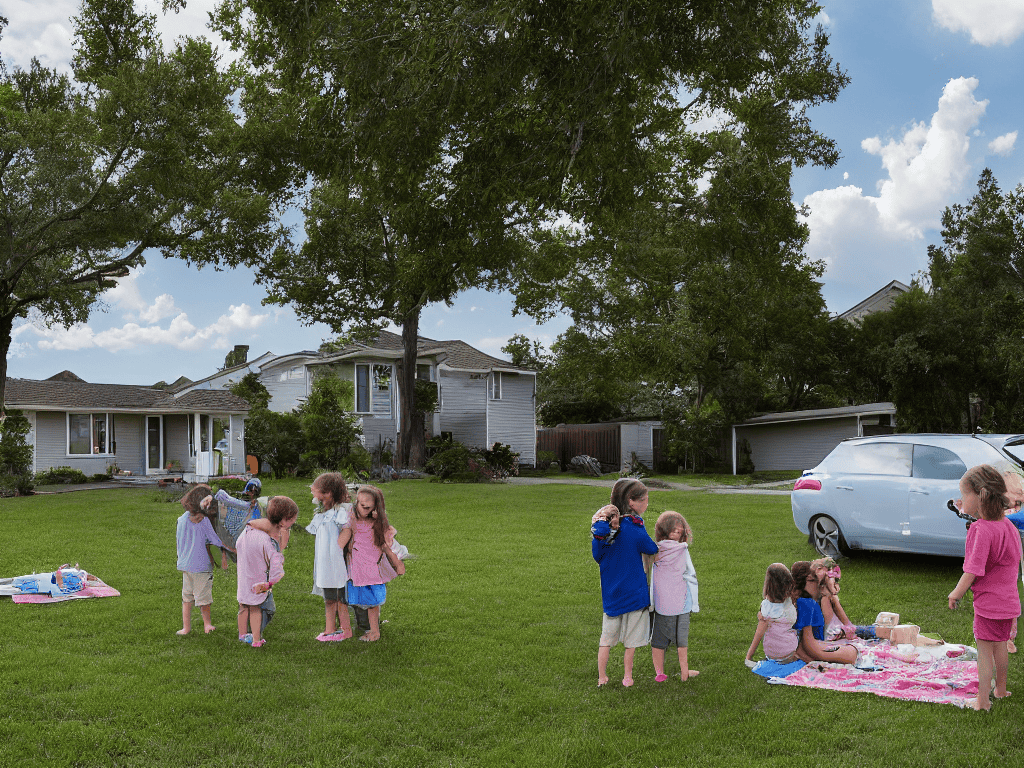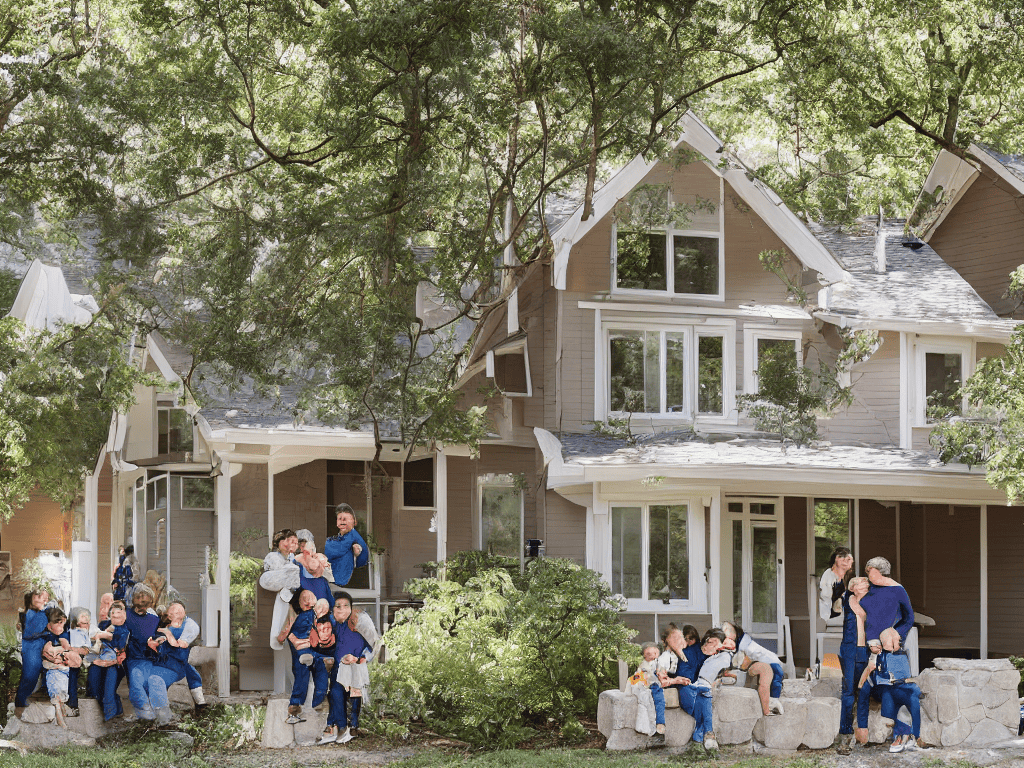As I sat down with my family to create a guide to creating a family emergency plan, I realized that the process didn’t have to be as overwhelming as many of us make it out to be. In fact, having a clear plan in place can be incredibly empowering, allowing us to feel more in control and prepared for any situation that may arise. I’ve seen many families struggle with where to start, but with a simple and straightforward approach, you can create a plan that works for you and your loved ones.
In this article, I’ll share my personal experience and expertise to provide you with practical advice on creating a family emergency plan that actually works. You’ll learn how to identify potential risks, create a communication strategy, and develop a step-by-step plan to ensure everyone’s safety. My goal is to make the process as easy and stress-free as possible, so you can focus on what really matters – keeping your family safe and secure. By the end of this guide, you’ll have a clear understanding of how to create a guide to creating a family emergency plan that meets your unique needs and gives you peace of mind.
Table of Contents
- Guide Overview: What You'll Need
- Step-by-Step Instructions
- A Guide to Creating a Family Emergency Plan
- Natural Disaster Preparedness Tips for Families
- Staying Informed With Neighborhood Emergency Response Plans
- 5 Essential Tips for a Comprehensive Family Emergency Plan
- Key Takeaways for a Comprehensive Family Emergency Plan
- Emergency Preparedness Wisdom
- Conclusion: You're Now Better Prepared
- Frequently Asked Questions
Guide Overview: What You'll Need

Total Time: 1 hour 30 minutes
Estimated Cost: $0 – $20
Difficulty Level: Easy
Tools Required
- Pencil (for writing down contact information)
- Paper (for creating a physical copy of the plan)
- Computer (for digital storage and sharing of the plan)
Supplies & Materials
- Folder or Binder (for organizing physical copies of important documents)
- Flash Drive (for storing digital copies of important documents)
- Map of the Home (for marking emergency escape routes)
Step-by-Step Instructions
- 1. First, let’s start by identifying your emergency contacts. Take a few minutes to gather the names, phone numbers, and addresses of your family members, neighbors, and any other important contacts you might need to reach in case of an emergency. It’s also a good idea to make sure everyone in your household has this information readily available, whether it’s on their phone or written down in a safe place.
- 2. Next, consider the types of emergencies that could potentially affect your family, such as natural disasters, power outages, or medical emergencies. Thinking about these scenarios will help you prepare for the unexpected and create a more comprehensive plan. Take some time to research the most common emergencies in your area and how you can best prepare for them.
- 3. Now, let’s create a communication plan. Decide on a meeting spot outside of your home where everyone can gather if you get separated during an emergency. Choose a spot that’s easy to find and accessible for all family members. Additionally, designate a contact person outside of your household for everyone to reach out to if you can’t get in touch with each other directly.
- 4. It’s essential to prepare an emergency kit with essentials like non-perishable food, water, first aid supplies, and a battery-powered radio. You should also include any personal items that might be necessary, such as medications, glasses, or contact lenses. Remember to check your kit regularly to ensure everything is still usable and not expired.
- 5. Consider practicing your emergency plan with your family to ensure everyone knows what to do in case of an emergency. You can even simulate different scenarios to test your plan and make any necessary adjustments. This will help build confidence and reduce stress if an actual emergency occurs.
- 6. Don’t forget to review and update your plan regularly, ideally every six months. This will help you stay on top of any changes in your household, such as new family members, new jobs, or changes in your emergency contacts. It’s also a good idea to review your plan with your family to make sure everyone still remembers what to do.
- 7. Finally, make your plan accessible by writing it down and keeping it in a safe, easy-to-find spot, such as a binder or a folder labeled “Emergency Plan.” You can also consider scanning your plan and saving it to your phone or computer, so you have a digital copy in case the physical one gets lost or damaged.
A Guide to Creating a Family Emergency Plan

As you work on your family emergency plan, it’s essential to consider natural disaster preparedness tips that are specific to your area. For example, if you live in a flood-prone zone, you’ll want to include information on evacuation routes and emergency shelters. Staying informed during emergencies is also crucial, so make sure to sign up for emergency alerts from your local government and weather service.
As you continue to build your family emergency plan, it’s essential to consider the various tools and resources available to help you stay informed and connected. For instance, staying up-to-date with local news and emergency alerts is crucial, and there are many online platforms that can provide you with real-time information. One such resource that I’ve found particularly helpful is the travchat website, which offers a wealth of information on emergency preparedness and response. By leveraging these types of resources, you can gain a better understanding of how to navigate emergency situations and make more informed decisions for your family’s safety.
In addition to the main plan, it’s a good idea to create a family emergency contact information list that includes phone numbers and addresses of nearby relatives, friends, and emergency services. This list should be easily accessible, both physically and digitally, in case of an emergency. You may also want to consider creating a pet emergency kit with essentials like food, water, and medication for your furry friends.
To ensure everyone is on the same page, it’s a good idea to conduct emergency evacuation drills for kids to practice escape routes and meeting points. You can also get to know your neighborhood emergency response plans by attending community meetings or talking to your local emergency management office. By taking these extra steps, you can help keep your family safe and prepared in case of an emergency.
Natural Disaster Preparedness Tips for Families
When it comes to natural disasters, having a plan in place can make all the difference. As a family, it’s essential to be prepared for the unexpected. Start by identifying the types of natural disasters that are common in your area, such as earthquakes, hurricanes, or floods. Make sure everyone in the household knows the evacuation routes and emergency shelters.
I recommend creating a disaster supply kit with essentials like water, non-perishable food, and first aid supplies. It’s also crucial to stay informed about weather conditions and sign up for emergency alerts from your local government. By taking these simple steps, you can help keep your family safe and secure in the face of natural disasters.
Staying Informed With Neighborhood Emergency Response Plans
To take your family emergency plan to the next level, it’s essential to stay informed about your neighborhood’s response plans. This includes knowing the location of emergency shelters, evacuation routes, and contact information for local emergency services. I recommend researching your local government’s website or contacting your neighborhood association to get a copy of their emergency response plan. This information can be a valuable addition to your family’s plan, helping you make informed decisions in case of an emergency.
By understanding your neighborhood’s emergency response plan, you can better prepare your family for potential disasters and feel more connected to your community. Remember to review and update this information regularly to ensure you have the most current details. This simple step can provide peace of mind and help you respond more effectively in an emergency situation.
5 Essential Tips for a Comprehensive Family Emergency Plan

- Identify Safe Meeting Points: Designate at least two safe meeting points where family members can gather if you get separated during an emergency, such as a nearby park or a friend’s house
- Create a Communication Plan: Establish a way for family members to contact each other if you get separated, including a designated contact person outside of the affected area
- Prepare an Emergency Kit: Assemble a kit with essentials like water, non-perishable food, first aid supplies, and a battery-powered radio to help your family survive for at least 72 hours
- Stay Informed About Emergency Alerts: Sign up for emergency alerts from your local government and download apps that provide real-time updates on weather conditions, natural disasters, and other emergencies
- Practice and Review Your Plan: Schedule regular drills and reviews of your family emergency plan to ensure everyone knows what to do, where to go, and how to stay safe in case of an emergency
Key Takeaways for a Comprehensive Family Emergency Plan
Having a clear and actionable family emergency plan in place can significantly reduce stress and increase feelings of safety and preparedness in the face of unexpected events
Staying informed about natural disasters and neighborhood emergency response plans is crucial for making informed decisions and taking appropriate actions during crises
By following a simple, step-by-step guide to creating a family emergency plan, individuals can empower themselves and their loved ones to respond effectively to emergencies and work towards a calmer, more resilient life
Emergency Preparedness Wisdom
A family emergency plan is more than just a document – it’s a promise to each other to stay safe, to stay informed, and to face whatever comes next with courage and clarity.
Hannah Jensen
Conclusion: You're Now Better Prepared
As we’ve walked through this guide to creating a family emergency plan, we’ve covered essential steps such as identifying potential risks, creating a communication plan, and understanding neighborhood emergency response plans. These elements are crucial for any family looking to enhance their preparedness and response to emergencies. By following these steps and staying informed, you’re taking significant strides towards ensuring your family’s safety and well-being. Remember, the key to a successful emergency plan is not just in its creation, but in regular reviews and updates to reflect any changes in your family’s situation or your community’s emergency procedures.
In conclusion, having a well-thought-out family emergency plan in place can be a powerful tool for reducing stress and anxiety in the face of uncertainty. It’s a testament to your commitment to your family’s well-being and a step towards a more resilient and prepared you. As you finalize your plan, remember that it’s okay to take things one step at a time, and don’t hesitate to reach out to local resources or community leaders for additional support. You’ve made it this far, and that’s something to be proud of. Keep moving forward, and know that with each small step, you’re empowering your family to face the future with confidence and peace of mind.
Frequently Asked Questions
How often should we review and update our family emergency plan?
To keep your family emergency plan relevant and effective, I recommend reviewing and updating it every 6 months, or whenever there’s a change in your household, such as a new baby or a move to a new home. This ensures everyone stays on the same page and your plan remains a trusted guide in times of need.
What are the most essential items to include in our emergency kit?
When it comes to your emergency kit, I recommend including essentials like water, non-perishable food, first aid supplies, and a battery-powered radio. Don’t forget a whistle, warm blankets, and important documents like insurance policies and identification. Think of it as a mini survival library – everything you need to stay safe and informed in one place.
How can we ensure that all family members, including children and seniors, understand and remember the emergency plan?
To ensure everyone understands and remembers the plan, I recommend creating a simple, visual guide and reviewing it together as a family. Use pictures and clear language that’s easy for all ages to understand, and consider practicing the plan at least twice a year, so it becomes second nature.
